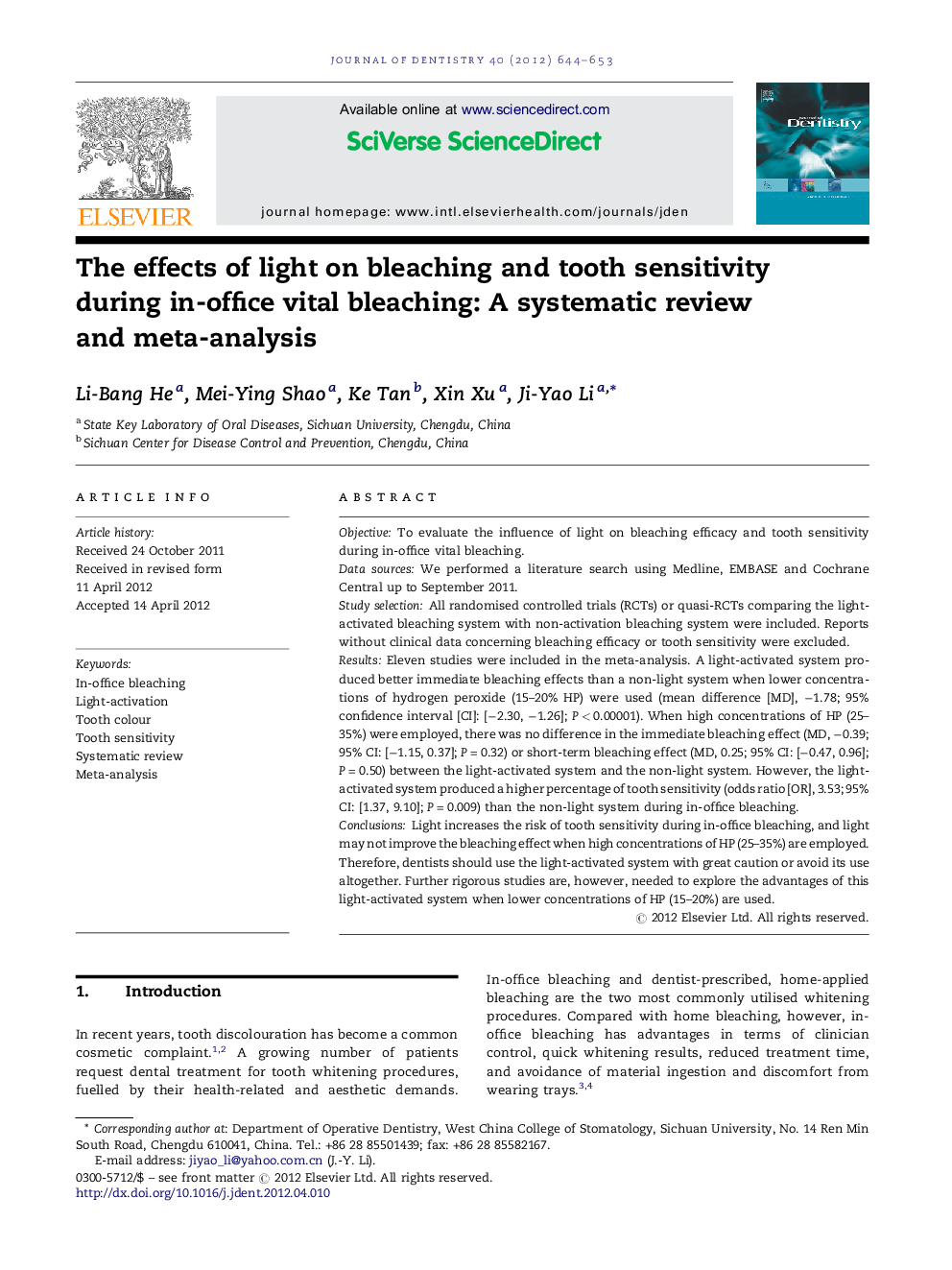| Article ID | Journal | Published Year | Pages | File Type |
|---|---|---|---|---|
| 3145101 | Journal of Dentistry | 2012 | 10 Pages |
ObjectiveTo evaluate the influence of light on bleaching efficacy and tooth sensitivity during in-office vital bleaching.Data sourcesWe performed a literature search using Medline, EMBASE and Cochrane Central up to September 2011.Study selectionAll randomised controlled trials (RCTs) or quasi-RCTs comparing the light-activated bleaching system with non-activation bleaching system were included. Reports without clinical data concerning bleaching efficacy or tooth sensitivity were excluded.ResultsEleven studies were included in the meta-analysis. A light-activated system produced better immediate bleaching effects than a non-light system when lower concentrations of hydrogen peroxide (15–20% HP) were used (mean difference [MD], −1.78; 95% confidence interval [CI]: [−2.30, −1.26]; P < 0.00001). When high concentrations of HP (25–35%) were employed, there was no difference in the immediate bleaching effect (MD, −0.39; 95% CI: [−1.15, 0.37]; P = 0.32) or short-term bleaching effect (MD, 0.25; 95% CI: [−0.47, 0.96]; P = 0.50) between the light-activated system and the non-light system. However, the light-activated system produced a higher percentage of tooth sensitivity (odds ratio [OR], 3.53; 95% CI: [1.37, 9.10]; P = 0.009) than the non-light system during in-office bleaching.ConclusionsLight increases the risk of tooth sensitivity during in-office bleaching, and light may not improve the bleaching effect when high concentrations of HP (25–35%) are employed. Therefore, dentists should use the light-activated system with great caution or avoid its use altogether. Further rigorous studies are, however, needed to explore the advantages of this light-activated system when lower concentrations of HP (15–20%) are used.
